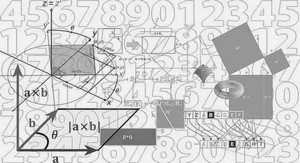Extension aux composites non linéaires
Introduction
On propose d’étendre les résultats obtenus au chapitre 2 pour des composites non linéaires. Compte tenu de la difficulté supplémentaire liée `a la non linéarité de comportement des phases, on propose de restreindre l’analyse au contexte de la conductivité thermique. Les résultats généraux obtenus pourront néanmoins ˆetre facilement réécrits pour le cas de l’élasticité non linéaire. Dans la premi`ere partie du chapitre, on étend l’approche par développement asymptotique pour un composite dont le comportement des phases est décrit par une loi dérivant d’un potentiel. On établit ainsi les probl`emes d’homogénéisation d’ordre supérieur ainsi que la solution générale des probl`emes aux ordres 1 et 2. On aboutit ensuite l’expression générale du potentiel macroscopique incluant les effets du double gradient de la température macroscopique (qui est équivalent, pour le cas de la thermique, aux effets du gradient de la déformation macroscopique en élasticité). Dans la seconde partie du chapitre, on détermine les expressions analytiques du potentiel macroscopique pour le cas d’un composite stratifié dont les phases sont régies par une loi en puissance. Ce chapitre est issu d’un article en cours de publication qui a été rédigé en anglais.
Application of the asymptotic series method for thermal properties of some non linear composites
Description of the problem
We consider a periodic, non linear composite whose local constituents have the following behavior : σ(X) = ∂ψ ∂ε (X, ε(X)) (4.1) Extension aux composites non linéaires where ψ is defined by : ψ(X, ε(X)) = X r χr(X)ψr(ε(X)) (4.2) χr(X) are the characteristic functions of the phases and ψr(X) for r = 1, 2, … are non linear functions of the gradient of temperature ε(X), which define the local behavior in the phase ”r”. Each potential ψr(ε(X)) is assumed to be C ∞ with respect to the variable ε(X). The gradient of temperature and the flux comply with : divX(σ(X)) = 0, ε(X) = ∇Xu(X) (4.3) where u(X) is the temperature. In the above relation, the indice ”X” in divX and ∇X means that the derivation is made with respect to the vector position X. This distinction is needed since two space variables, namely a slow and a rapid position vector, will be introduced by the asymptotic method. For simplicity, the volumic sources have not been considered in the balance equation. Additionally, the temperature and the flux are continuous across the interfaces between the inclusions and the matrix : [u(X)]Γ = 0, [σ(X).n]Γ = 0 (4.4) in which n is the outward normal unit vector taken on the interface Γ. The notation [•]Γ represents the jump of • across the interface Γ defined as follows : [•]Γ = • + − •−, where • + and • − are the values of • calculated on both sides of Γ.
Derivation of the cell problems
We now employ the asymptotic expansion method in order to derive the general form of the local response of the periodic composites due to an external loading. Classically, we introduce the two non-dimensional space variables x = X/L and y = X/h where h and L are respectively the characteristic lengthscale of the microstructural elements (the size of the unit cell, of the inclusions, the distance between two neighboring inclusions…) while L denotes a characteristic length of the studied macrostructure or the characteristic size related to the applied loading. Variable x is called slow variable while y is the rapid one. All the fields, i.e. temperature, gradient of temperature and flux, are assumed to depend on these two variables. The dependence on x is attributed to the applied macroscopic loading while the variations with y are the fluctuation due to the local heterogeneity. Due to the periodicity of the microstructure, the characteristic functions χr(y) only depend on the rapid variable y. The local behavior (4.1) reads : σ(x, y) = ∂ψ ∂ε (y, ε(x, y)) with : ψ(y, ε(x, y)) = X r χr(y)ψr(ε(x, y)) (4.5) The scale factor, ǫ = h/L, is assumed to be small compared to 1 but not negligible. In presence of this small parameter, the solution at local scale can be expanded 104 as a power series in ǫ : u(x, y) = L nX =+∞ n=0 ǫ nu n (x, y) (4.6) where u n (x, y) are y-periodic and non dimensional due to the presence of the lengthscale L before the sum. The gradient operator is decomposed into two parts : ∇• = 1 L (∇x • + 1 ǫ∇y•), where the indices x and y indicate that the derivatives are taken with respect to x and y respectively. It leads to : ε(x, y) = ε −1 (x, y) + nX =+∞ n=0 ε n (x, y) (4.7) where ε −1 (x, y) and ε n (x, y) for n ≥ 0 read : ε −1 (x, y) = ∇yu 0 (x, y) ε n (x, y) = ∇xu n (x, y) + ∇yu n+1(x, y) for n ≥ 0 (4.8) The gradient of temperature must remain finite when the scale factor tends to zero. Consequently, ε −1 (x, y) must be zero and u 0 (x, y) is only function of the slow space variable, x. It is thereafter denoted U(x). The gradient of temperature, ε 0 (x, y), reads : ε 0 (x, y) = E(x) + ∇xu 1 (x, y) with : E(x) = ∇xU(x) (4.9) The microscopic flux takes also the form of a power series in ǫ : σ(x, y) = nX =+∞ n=0 ǫ nσ n (x, y) (4.10) with : σ 0 (x, y) = ∂ψ ∂ε (ε 0 (x, y)) σ 1 (x, y) = ∂ 2ψ ∂ε∂ε(ε 0 (x, y)).ε1 (x, y) σ 2 (x, y) = ∂ 2ψ ∂ε∂ε(ε 0 (x, y)).ε2 (x, y) + 1 2 ∂ 3ψ ∂ε∂ε∂ε(ε 0 (x, y)) : (ε 1 (x, y) ⊗ ε 1 (x, y)) … (4.11) In the equilibrium equation (the first equation in (4.3)), the divergence operator is decomposed into two divergence operators whith respect to the space variables x and y. The balance equation reads then : 1 ǫ divy(σ 0 (x, y)) + nX =+∞ n=0 ǫ n h divy(σ n+1(x, y)) + divx(σ n (x, y))i = 0 (4.12) 105 By collecting all the terms having the same power in ǫ we obtain : divy(σ 0 (x, y)) = 0 divx(σ n (x, y)) + divy(σ n+1(x, y) = 0 for n ≥ 0 (4.13) By taking the average of each term in (4.13) over the volume of the cell, we obtain : Z ∂V σ 0 (x, y)).ndS = 0 divx(< σn (x, y) >V ) + Z ∂V σ n+1(x, y).ndS = 0 for n ≥ 0 (4.14) in which the divergence theorem has been used in order to replace the volume integral by an integral over the boundary ∂V of the cell. All surface integrals are null as a consequence of the equilibrium between two neighboring cells. It remains : divx(< σn (x, y) >V ) = 0 for n ≥ 0 (4.15) It is possible to eliminate (4.15) in equations (4.13) : div∗ x (σ n (x, y)) + divy(σ n+1(x, y)) = 0 for n ≥ 0 (4.16) in which we have introduced div∗ x , defined, for any function f(x, y), by : div∗ x f(x, y) = divx f(x, y)− < f(x, y) >V (4.17) Finally, by replacing the expressions (4.11) in the first equation in (4.13) and in equations (4.16), we get a hierarchy of equations for the unknowns u 1 (x, y), u 2 (x, y), u 3 (x, y), etc. The problem at the first order reads : divy σ 0 (x, y) = 0, σ0 (x, y) = ∂ψ ∂ε (E(x) + ∇yu 1 (x, y)) u 1 (x, y) Γ = 0, σ 0 (x, y).n Γ = 0, u 1 (x, y) y − periodic, σ0 (x, y).n y − antiperiodic (4.18) In the above equation we search the solution u 1 (x, y) for a given value of E(x). The problem at the second order is : divy σ 1 (x, y) = − div∗ x σ 0 (x, y) , σ 1 (x, y) = ∂ 2ψ ∂ε∂ε(ε 0 (x, y)). ∇yu 2 (x, y) + ∇xu 1 (x, y) u 2 (x, y) Γ = 0, σ 1 (x, y).n Γ = 0, u 2 (x, y) y − periodic, σ1 (x, y).n y − antiperiodic (4.19) In the second order problem, u 1 (x, y) and ε 0 (x, y) are known since they are computed as the solutions of the first order problem. In equation (4.19), the unknown 106 variable is u 2 (x, y). The problem at the third order takes the form : divy σ 2 (x, y) = − div∗ x σ 1 (x, y) , σ 2 (x, y) = ∂ 2ψ ∂ε∂ε(ε 0 (x, y)). ∇yu 3 (x, y) + ∇xu 2 (x, y) + 1 2 ∂ 3ψ ∂ε∂ε∂ε(ε 0 (x, y)) : (ε 1 (x, y) ⊗ ε 1 (x, y)) u 3 (x, y) Γ = 0, σ 2 (x, y).n Γ = 0, u 3 (x, y) y − periodic, σ2 (x, y).n y − antiperiodic (4.20) In these equations u 1 (x, y), u 2 (x, y), ε 0 (x, y) and ε 1 (x, y) are determined by computing the solution of the first and second order cell problems. The unknown is the temperature u 3 (x, y). To summarize, each term of the series (4.6) is computed iteratively as the solution of a hierarchy of cell problems for which (4.18), (4.19) to (4.20) are the first three problems. It must be noted that the first order cell problem is non linear for u 1 (x, y) since ψ is a non linear function of the gradient of temperature. On the other hand, the second order and third order cell problems (given by (4.19) and (4.20)), and also higher order ones, are linear for the temperatures u 2 (x, y), u 3 (x, y), etc. They can be interpreted as linear conductivity problems for a heterogeneous material having the conductivity Cij (y) = ψ,εiεj (ε 0 ) and in presence of source terms. Note also that the conductivity Cij (y) depends on E(x) and is heterogenous not only from one phase to another but also within the phases since it depends on the field ε 0 . Let us recall that the first cell problem is commonly considered in homogenization for computing the macroscopic response of non linear composites. In this first problem, the loading parameter is E(x), the solution of this problem does not introduce double gradient effects. As shown in the following, these effects are captured at higher orders. Following [11], in the case of linear elasticity, we propose to derive the general form of the solution of these cell problems. Due to their complexity, only the cell problems at first and second order are considered



